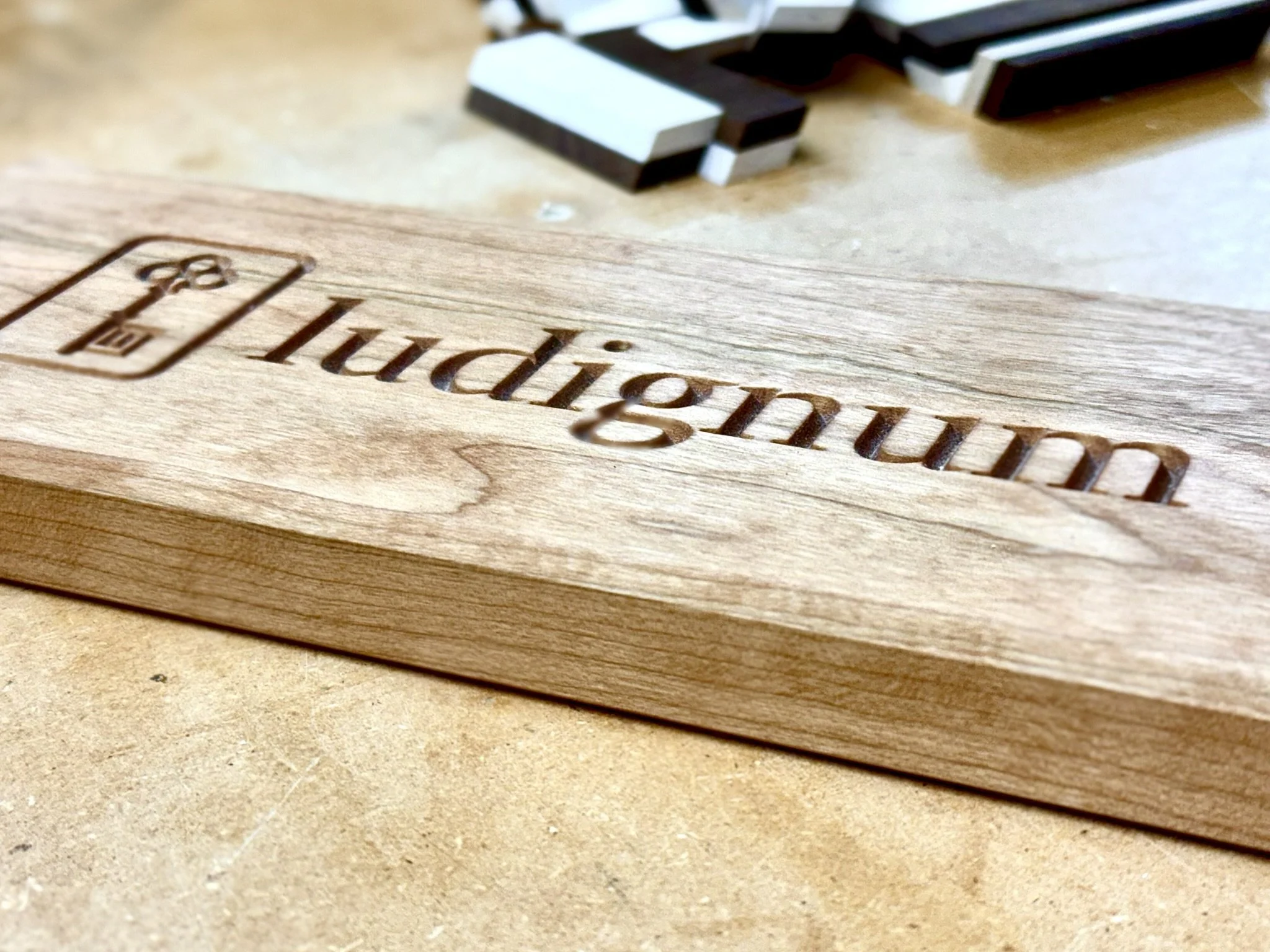Ludignum: An Origin Story
My love of puzzles predates my interest in woodworking by many years. As a child, I was drawn to anything that resembled a puzzle — riddles, logic problems, mathematical curiosities. They felt like small doorways into a world where structure, insight, and beauty converged. Each one offered a set of rules and suggested that hidden beneath the surface were patterns waiting to be discovered.
I didn’t encounter my first physical puzzle until I was a teenager, during an afternoon visit to a friend’s house. He and I shared a friendly intellectual rivalry, the sort that made every idea feel like a contest worth pursuing. He had several wooden disentanglement puzzles in his room: rope threaded through metal rings, beads, impossible crossings. One of them, the classic ring-and-rope design with an N-ary solution, held me enthralled. I remember not wanting to leave until I had solved it. That was the first time I understood that puzzles could live not just in the mind, but in the hand — that the joy of discovery could be something you feel as much as understand.
My relationship with puzzles deepened over time, and I began to amass my own collection: traditional Hakone yosegi boxes, Hanayama cast puzzles, blacksmith puzzles. Hidden compartments in particular have always fascinated me. As a child, they seemed like something from fiction — secret drawers, sliding panels, concealed chambers in desks or trunks. Discovering, as an adult, that such things existed in the real world only deepened the allure. There’s a special kind of magic in an object that reveals more than it first appears, a quiet promise that the familiar may still hold mysteries.
Alongside my love of puzzles, I’ve always had a deep appreciation for well-made objects, things crafted with care, intention, and precision. Whether it’s a beautifully balanced tool, a musical instrument, or even something as simple as a thoughtfully engineered bottle opener, I value workmanship. I’ve never been fond of disposable things; I prefer objects built to last, that feel right in the hand, that reward touch and attention.
Puzzle boxes amplified that feeling. Holding a finely crafted box, especially the exquisitely made KCG pieces, gives me a frisson of joy and wonder. There is a particular pleasure in the haptics of a well-fitted mechanism, in the way its components slide and click confidently together. And because I believe that every object has a story, most of my puzzle designs have been rooted in narrative. I’m drawn to objects that tell their story through their construction and behavior.
Ludignum emerged from my desire to merge all of these experiences — puzzles, hidden mechanisms, finely crafted objects, and the joy of storytelling — into a single aspiration. I wanted to create physical objects that explored the logic of mechanisms, the warmth of wood, the narrative possibilities of hidden compartments, and the quiet delight of discovery.
The name Ludignum comes from two Latin roots: ludus, meaning play or fun, and lignum, meaning wood — play in wood. To be honest, I was surprised this name hadn’t already been used.
Ludignum isn’t a factory or a company in the industrial sense. It is a one-person workshop, a place where ideas are shaped slowly and deliberately, with a level of care that I hope others can appreciate as much as I do. Each design begins as a sketch or a question: What if this part could move in an unexpected way? What surprises are fun to discover? What if the puzzle taught you how to solve it as you explored it?
The foundation of Ludignum is simple: to craft beautiful wooden mechanisms that bring joy, curiosity, and a moment of quiet discovery.
Thank you for being here at the beginning of this journey. I look forward to sharing each step of it in this Workshop Journal.

